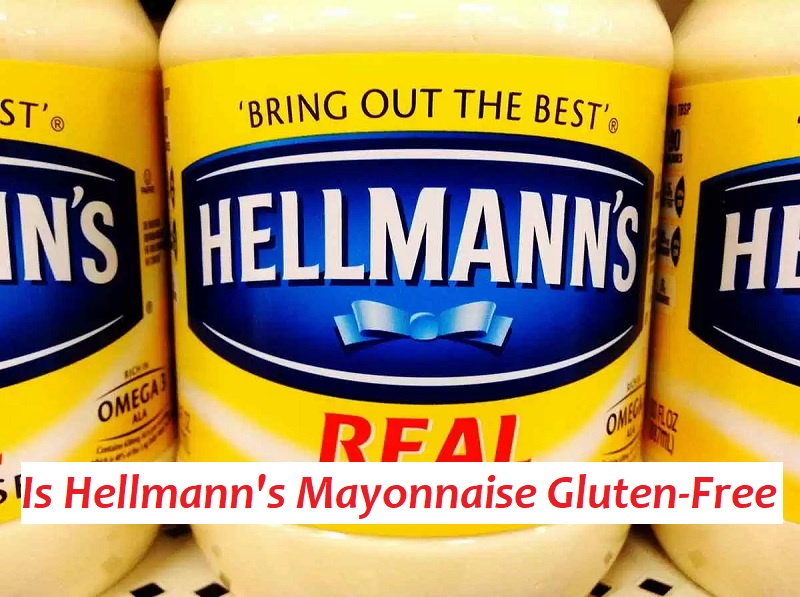Mayonnaise, an ubiquitous culinary staple, serves as a versatile condiment and dressing. However, for individuals adhering to a gluten-free diet, determining whether mayonnaise is permissible remains crucial. This article endeavors to provide a comprehensive examination of Hellmann’s mayonnaise and its gluten status, empowering you with informed dietary choices.
Understanding Gluten and Its Impact on Health
Gluten, a protein composite found in grains such as wheat, rye, and barley, poses a significant challenge for individuals with celiac disease or gluten intolerance. Consuming gluten triggers an autoimmune response in these individuals, damaging the small intestine and hindering nutrient absorption. This can lead to a range of symptoms, including digestive issues, fatigue, and even neurological problems.
According to the Celiac Disease Foundation, approximately 1 in 100 people worldwide have celiac disease, while many more may have non-celiac gluten sensitivity. As awareness of these conditions grows, so does the demand for gluten-free products. In fact, the global gluten-free market is expected to reach $7.59 billion by 2020.

Gluten-Free Diet: Addressing Dietary Concerns for Celiac Disease and Gluten Intolerance
Individuals with celiac disease or gluten intolerance must adhere to a strict gluten-free diet to prevent triggering their condition. This dietary regimen entails eliminating all foods containing gluten, including wheat, rye, barley, and potentially cross-contaminated products. This can be challenging, as gluten can hide in unexpected places, such as sauces, dressings, and condiments like mayonnaise.
Fortunately, there are many gluten-free alternatives available, including Hellmann’s mayonnaise. But before we dive into the specifics of this popular brand, let’s take a closer look at the ingredients that make up mayonnaise.
Analyzing Ingredients: A Deep Dive into Hellmann’s Mayonnaise Components
Hellmann’s mayonnaise is crafted from soybean oil, water, vinegar, whole eggs, salt, sugar, and calcium disodium EDTA. Soybean oil, water, vinegar, and calcium disodium EDTA are inherently gluten-free ingredients. However, the remaining components, specifically whole eggs, salt, and sugar, may raise some concerns for those following a gluten-free diet.
Whole Eggs
Eggs are naturally gluten-free, but cross-contamination can occur during processing or packaging. This is especially true for products that use whole eggs, as they may come into contact with gluten-containing ingredients during production. However, Hellmann’s has strict protocols in place to prevent cross-contamination, making their mayonnaise safe for individuals with celiac disease or gluten intolerance.
Salt
Salt is also considered a gluten-free ingredient. However, some manufacturers may add anti-caking agents to their salt, which can contain gluten. Hellmann’s uses pure salt without any additives, ensuring that their mayonnaise remains gluten-free.
Sugar
Sugar is another ingredient that may raise concerns for individuals following a gluten-free diet. While sugar itself does not contain gluten, it can be contaminated during processing. However, Hellmann’s sources their sugar from reputable suppliers who adhere to strict gluten-free standards.
Exploring Alternatives: Gluten-Free Mayonnaise Options and Their Benefits
If you have celiac disease or gluten intolerance, you may be wondering if there are other gluten-free mayonnaise options available besides Hellmann’s. The good news is that there are many alternatives on the market, each with its own unique benefits.
- Avocado Oil Mayo: Made with avocado oil instead of soybean oil, this mayonnaise is a healthier option, as avocado oil is rich in monounsaturated fats and antioxidants.
- Olive Oil Mayo: Similar to avocado oil mayo, this option uses olive oil as its base, providing heart-healthy benefits.
- Coconut Oil Mayo: For those looking for a dairy-free and soy-free option, coconut oil mayo is a great choice. It also has a slightly sweeter taste compared to traditional mayonnaise.
- Vegan Mayo: Made with plant-based ingredients, vegan mayo is suitable for those following a vegan or vegetarian diet. It is also free from gluten, dairy, and eggs.
- Homemade Mayo: If you prefer to make your own mayonnaise, there are many gluten-free recipes available online. This allows you to control the ingredients and ensure that it is safe for your dietary needs.
Navigating Food Labels: Deciphering Gluten Content in Packaged Goods
When shopping for gluten-free products, it’s essential to read food labels carefully. While some products may be labeled as “gluten-free,” others may not have any indication of their gluten content. In these cases, it’s crucial to look for potential sources of gluten in the ingredients list.
Some common ingredients that may contain gluten include:
- Wheat, barley, rye, and oats (unless specifically labeled as gluten-free)
- Modified food starch
- Malt or malt flavoring
- Hydrolyzed vegetable protein
- Brewer’s yeast
- Soy sauce
- Food additives such as dextrin, caramel color, or natural flavors
It’s also important to note that even if a product does not contain gluten in its ingredients, it may still be at risk for cross-contamination during production. Look for products that have been certified gluten-free by reputable organizations, such as the Gluten-Free Certification Organization (GFCO) or the National Celiac Association (NCA).
Ensuring Food Safety: Prevention and Management of Gluten Cross-Contamination
Cross-contamination occurs when gluten-containing foods come into contact with gluten-free foods, leading to the transfer of gluten particles. This can happen during production, packaging, or even in your own kitchen.
To prevent cross-contamination, it’s essential to follow strict food safety protocols, such as:
- Keeping gluten-free products separate from gluten-containing products during storage and preparation.
- Using separate utensils, cutting boards, and Cooking surfaces for gluten-free and gluten-containing foods.
- Cleaning all surfaces and utensils thoroughly before preparing gluten-free meals.
- Avoiding shared condiments, such as jars of mayonnaise, that may have come into contact with gluten-containing foods.
Maintaining a Gluten-Free Lifestyle: Practical Tips for Success
Adhering to a gluten-free diet can be challenging, especially when dining out or attending social events. Here are some practical tips to help you maintain a gluten-free lifestyle:
- Plan ahead: When dining out, research restaurants beforehand to ensure they offer gluten-free options. If attending a social event, bring your own gluten-free dish to share.
- Communicate your needs: Don’t be afraid to communicate your dietary needs to friends, family, and restaurant staff. They may not be familiar with celiac disease or gluten intolerance, so it’s essential to educate them.
- Be cautious when traveling: When traveling, pack gluten-free snacks and research local cuisine to ensure there are safe options available.
- Experiment with new recipes: Following a gluten-free diet doesn’t mean you have to sacrifice taste. There are many delicious gluten-free recipes available online, so don’t be afraid to try new things.
Gluten-Free Certifications: Understanding Standards and Accreditation
As mentioned earlier, some organizations offer gluten-free certifications to products that meet their strict standards. These certifications provide an added level of assurance for individuals with celiac disease or gluten intolerance.
Some reputable gluten-free certifications include:
- Gluten-Free Certification Organization (GFCO): This certification is recognized worldwide and requires products to have less than 10 parts per million (ppm) of gluten.
- National Celiac Association (NCA): This certification requires products to have less than 5 ppm of gluten and also considers the manufacturing process and potential for cross-contamination.
- Beyond Celiac: This certification requires products to have less than 20 ppm of gluten and also takes into account the manufacturing process and potential for cross-contamination.
Beyond Mayonnaise: Gluten-Free Condiments and Dressings for Every Taste
While mayonnaise is a popular condiment, there are many other gluten-free options available to add flavor to your meals. Here are some delicious gluten-free condiments and dressings to try:
- Mustard: Made from mustard seeds, this tangy condiment is naturally gluten-free.
- Ketchup: Most ketchup brands are gluten-free, but it’s always best to check the label to be sure.
- Salsa: Made from tomatoes, onions, and peppers, salsa is a tasty gluten-free option for adding flavor to dishes.
- Salad Dressings: Many salad dressings are gluten-free, but it’s essential to check the label for potential sources of gluten, such as modified food starch or malt vinegar.
- Barbecue Sauce: While some barbecue sauces may contain gluten, there are many gluten-free options available on the market.
- Hot Sauce: Made from chili peppers, hot sauce is a spicy and gluten-free addition to any meal.
Conclusion
In conclusion, Hellmann’s mayonnaise is gluten-free and safe for individuals with celiac disease or gluten intolerance. However, it’s always essential to read food labels carefully and look for reputable gluten-free certifications when purchasing packaged goods. With the growing demand for gluten-free products, there are many alternatives available, allowing individuals to enjoy their favorite condiments and dressings without compromising their health. By understanding gluten and its impact on health, adhering to a strict gluten-free diet, and following practical tips for success, individuals can maintain a healthy and enjoyable gluten-free lifestyle.

Related posts: